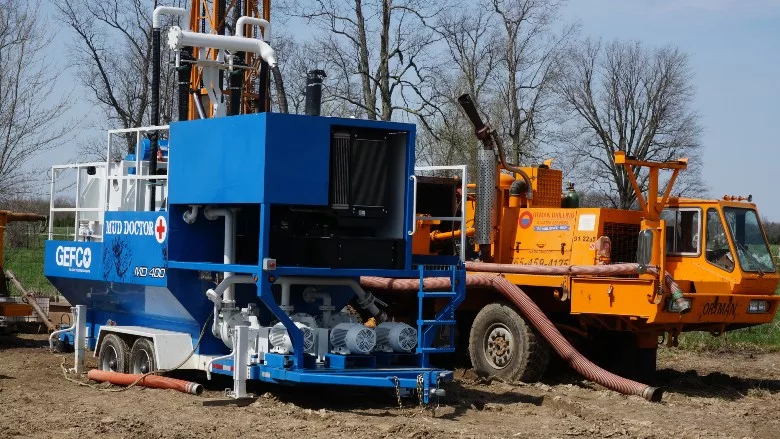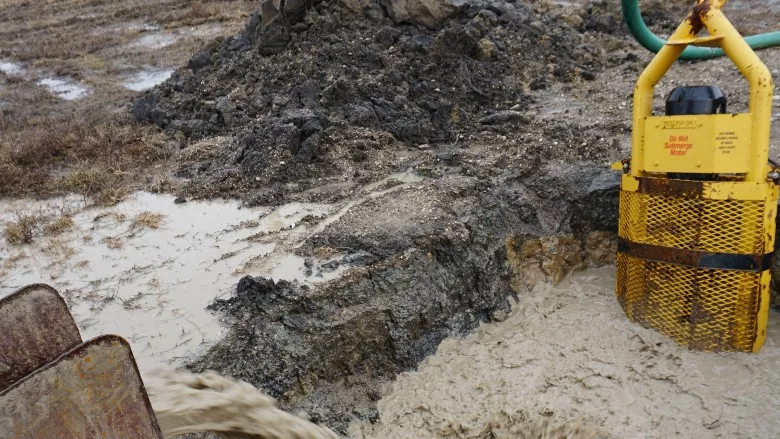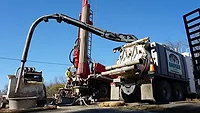Tips for an Effective Drilling Management, Disposal Plan
On Deeper Bores, Monitor Materials Amounts, Re-adjust as Needed

When developing a drilling management and disposal program, start with the components within your control: the equipment you have and what you know about hole depth and expected geology.
Source: Brock Yordy

Think about all aspects of a solid’s path through your system. A transfer pump moves things along to the solids control unit, but if the pump breaks things up too much you likely create more waste than necessary.
Source: Brock Yordy

Are your hydrocyclones up to it? A system you’ve had success with at 400 feet may not have the same results at 800 feet.
Source: Brock Yordy
Creating an effective management plan requires combining the known with the unknown. As competent drilling professionals, we know the chosen drilling method, rig, tooling and borehole design. We control all those components. Mother Nature —the downhole geologic conditions — gives us the unknown factors affecting the plan. For an effective drilling management and disposal plan, drillers must utilize the components they can control to minimize the waste generated by the unknown components.
The size and scope of the drilling project has a direct impact on our plan and control parameters. One of the most challenging aspects of creating an effective plan involves single holes with varying conditions miles apart. Sadly, I hear that same excuse used to deflect the competency of drillers and companies as they trial-and-error their way through a residential or commercial geothermal project. However, all the information required for success falls within the control components. Once a driller understands their drilling method, the tooling package and rig capabilities, the outcome on any hole from a management and waste perspective becomes a known component. Yes, the borehole design can change by increasing the amount of material we produce. That’s common sense. Yes, the downhole conditions can swell or heave, requiring more fluids and creating more material to manage. We can mitigate any of these unknown issues by setting a reasonable material limit to dispose of and continually monitoring how that amount changes.
Proper Use of Mechanical Solids Control
In Part 1 of this series, “Tips for Fast Efficient Production Drilling,” I offered an example of a geothermal borehole 6-inches in diameter to a depth of 400 feet. This standard geothermal borehole design can make 2.9 cubic yards of waste material per hole if appropriately executed. Yet, think about how often that amount ends up double. What failed? In Part 1, I covered the issues with recirculation of drill solids and the importance of a drilling program that suits your drilling method and downhole conditions. An effective plan understands that recirculating drill solids have two significant impacts:
- First, incorporating recirculated solids into a drilling fluid destroys all the desirable properties of that fluid.
- Second, attempting to restore those desirable properties by adding more water, bentonite and additives creates more waste to dispose of at the end of the project.
To prevent an increase in waste production, we must properly handle solids the first time they come up the hole and reach the surface.
The standard industry thinking says any mechanical solids control system beats no system at all. However, a poorly designed or operated system continues to create more waste than necessary.
To remove solids on the first pass, we must utilize mechanical solids control methods. The standard industry thinking says any mechanical solids control system beats no system at all. However, a poorly designed or operated system continues to create more waste than necessary. The system we choose must have the capability to separate large and small solids while maintaining the maximum circulating volume for drilling.
Tracking the Solids Path
Understand that the shale or scalping shaker is not the first pass for large solids when they reach the surface. As large solids reach the surface we transfer them to the solids control unit through a pickup pump. Often, we require a transfer pump with multiple impellers or rotating at high speeds to maintain maximum flow volumes. Any drilling management plan must first jump this hurdle: finding a pickup pump that can transfer the largest-sized solid that geology allows. You can maintain the drilling program from the face of the bit to the surface, but if your pickup pump makes your solids too small to remove at the scalping screen you create more waste.
As large solids reach the scalping screen, the shaker must have enough surface area and vibrational energy to remove the fluid phase from those solids. This creates large, semi-dry solids for disposal. Next, the small solids get removed by hydrocyclones from the desander and desilter. If the underflow from the cones moves across a shaker, the screens and vibrational energy required must match the size of solids created by the underflow of the cones. Ultra-fine solids — material in the 20 micron down to 5 micron range — requires a centrifuge to remove.
Finally, all these components of an adequately sized and operated solids control unit require drilling fluids testing and maintenance, both performed by competent individuals. Often, I suggest getting a mud engineer on site to double-check the entire operation and process for maintaining drilling fluid properties.
Beyond dialing in the drilling and fluids program with the solids control program, one major mistake in production drilling involves underestimating the impacts of greater borehole depths. Today, new production projects often want you to drill 600- to 800-foot holes. With capable controlled components, a company with the right equipment should have no problem completing hundreds of holes to that depth. However, consider the time it takes for large solids to surface and the ultimate impact of those solids breaking down during the drilling phase. The solids control units used to drill 300- to 400-foot boreholes are not the same units used to drill 800-foot holes.
It all comes back to the circulating volume I discussed in Part 1. Beyond that, it means understanding that an additional 15% to 20% of that circulating volume will need to be disposed of and exchanged for new, low-solids fluid to maintain proper penetration rates. This is no different from rebuilding drilling fluid after drilling a couple of shallower geothermal boreholes. Think about that exchange of fluid the next time loops are too buoyant to set on the bottom of an 800-foot borehole.
A team must understand the physical impacts of drilling, as well as the science of separating solids into waste, to develop a proper management and disposal plan for a production project. Science doesn’t care if you install four residential or 500 commercial holes: The same principles apply. All the plan requires is that you balance removing the undesirable waste solids with rebuilding the drilling fluid back to desired properties. Create a plan with a maximum limit and monitor the waste produced. If the project has met 50% of that allowable limit and you are only a quarter complete, stop and adjust the plan before it gets out of control. When drilling rates start to slow or fluid properties stretch beyond repair, we do the same thing. Always keep an eye on significant changes to waste production. At the end of the project, we want as large a percentage of our waste as possible in the form of semi-dry, large solids ready for disposal.
Next month, I will wrap up this series on production drilling with Part 3, “Best Practices and Common Mistakes,” while disposing of on-site waste.
Looking for a reprint of this article?
From high-res PDFs to custom plaques, order your copy today!




